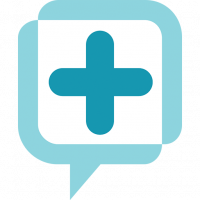Offering HRA incentives, like give-aways, or drawings for prizes, can increase assessment completions. But, there are some things to watch out for.
BTW, if you reacted to the graphic associated with this post, you experienced the draw of incentives. (Sorry for the fake-out.)
Certainly, we have seen incentives drive great success and improvement of completion rates. In one recent example, a client offered a simple spa basket with bath bombs and face masks. Another client gave away a Peloton Bike! Also, one client had a drawing for a gift card for a 1 month time period, and were at a 73% completion rate. After they dropped the incentive, that risk assessment completion rates dropped to 46%.
WHY OFFER HRA INCENTIVES
Some reasons and tips for offering incentives:
- People like free stuff. Especially new, hot, trendy things that maybe they wouldn’t “splurge” on normally.
- Make sure the HRA incentive is worth their while. Would you feel more inclined to complete an HRA for a $5 coffee gift card, or a $50 gift card?
- If you choose to do a gift card of value, but instead of providing one to every person that completes the risk assessment try increasing the value of that gift card and do a drawing each month.
- Tailor the incentive on what people in your demographics would want for greater effectiveness.
- Make sure your HRA incentives are not outdated. You don’t want to be giving out a $50 gift card for a grocery store that recently closed.
IMPACT ON MOTIVATION
There are lots of articles online about the success or failure of incentivizing health behaviors with financial gain. Often the concepts of intrinsic motivation versus extrinsic motivation will come into play. Some of those concepts are partially applicable to to HRA incentives, so a bit of research is a good idea. In general, it is important to understand if the motivation to complete an HRA is for the prize, rather than health insight, your other CTAs may struggle. In other words, are you only getting participation from people in perfect health doing it for a free buck? Intrinsic motivation for health and awareness theoretically produces the most purely motivated health action.
HOW TO OFFER INCENTIVES
Simply incorporate the offer in your promotions. Channels like Facebook and email are often far more appealing to users when you include incentive offers. Next, consider adding copy to the start page of HRA and/or the custom sidebar. Finally, upon completion, use a CTAs as a confirmation of entry. Optionally, think about using the last page of the report to promote the incentives. Also, remember to set a timeline for the competition and take it out of the HRA after completion.
FYI, there are online services to help with raffles, give-aways, etc. if you don’t have the bandwidth. Some can help with the legal challenges as well.
ALTERNATE VIEW
Possible reasons why not to offer an incentive:
- If the HRA incentives are not increasing participation rates, especially among the particular demographics that need the most involvement, then change them or drop them.
- It takes work to monitor incentives on the back end. For example, making sure that processes are in place so a person cannot get multiple gift cards or giveaways is important.
There are certainly additional arguments that can be made on both sides. But, these are the biggest ones that I hear and see consistently.
If you ask us, we feel it can’t hurt to at least try some incentives. As we mentioned, people like free stuff. Period.















 Thank you for your interest.
Thank you for your interest.